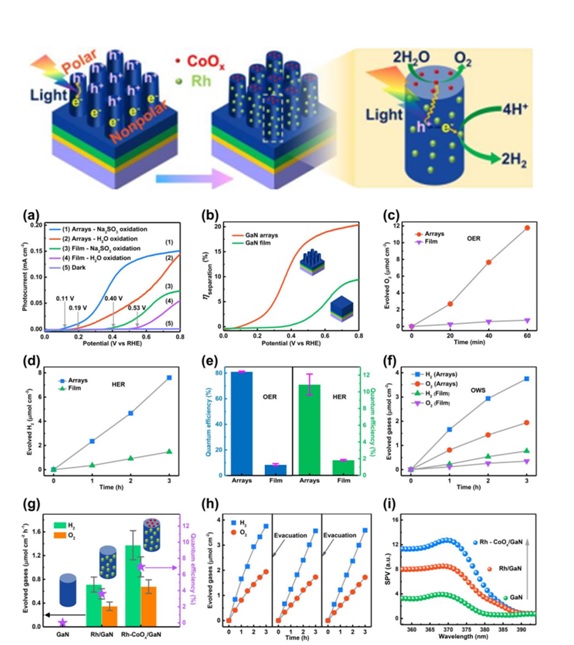Heterogeneous photocatalysts have promising applications in artificial photosynthetic solar-to-chemical energy conversion including photocatalytic water splitting for H2 production and CO2 reduction. Generally, the separation and transportation of photogenerated charge carriers principally determines the energy conversion efficiency of artificial photosynthesis systems. Using different exposed crystals facets of semiconductor is an effective way to spatially separate photogenerated electrons and holes. However, the underlying intrinsic driving force for the facets-induced charge separation is still unclear.
Recently, Prof. YAN Jianchang of Lighting Research and Development Center of the Institute of Semiconductors, Chinese Academy of Sciences (IOS, CAS), together with research groups led by Prof. LI Can and Prof. LI Rengui from the Dalian Institute of Chemical Physics (DICP) of the CAS to reveal great enhancement of separation efficiency for photogenerated chargers to remarkably boost photocatalytic overall water splitting reaction via the water separation in GaN nanostructure.
In this work, the typical III-Nitrides polar semiconductor gallium nitride (GaN) was selected as the based mode. First, the high-quality GaN film with Ga-polar terminal surface was grown by Metal Organic Vapor Deposition. Subsequently, the GaN nanorod arrays with polar and nonpolar surface were fabricated through Micro-nano processing technology. Using in-situ photochemical probing method, they experimentally uncovered that photogenerated electrons and holes accumulated respectively on the nonpolar and polar surfaces of the GaN nanorod arrays. The underlying driving force for the charge separation is speculated to be the different dipole moments on the polar and nonpolar surfaces that induces different surface band bendings. The charge separation efficiency was evidently enhanced from ~8% to more than 80%, approximate 10-times improvement. That value is a recordin this kind of material. Based on this unique charge separation, reduction cocatalyst and oxidation cocatalyst can be deposited on the nonpolar and polar surface respectively to enhance the quantum efficiency of photocatalytic overall water splitting from 0.9% to 6.9%. This work develops a novel universal strategy to promote charge separation and provides new insights to understand the intrinsic driving force for photogenerated charge separation. And it also laid a theoretical foundation of the construction of highly efficient artificial photosynthesis systems.
This work entitled "Surface polarity-induced spatial charge separation boosting photocatalytic overall water splitting on GaN nanorod arrays" was published online in Angew. Chem. Int. Ed. as a Full Article. Prof. YAN Jianchang from IOS, CAS and Prof. LI Can and Prof. LI Rengui from DICP, CAS are the communication co-authors. PhD ZHANG Liang (advisor, Prof. WANG Junxi from IOS, CAS) and PhD LI Zheng are the first co-authors. The work was supported by the National Key R&D Program of China, National Natural Science Foundation of China, and the Key Research Program of Frontier Sciences, CAS.
The full-text link: https://onlinelibrary.wiley.com/doi/full/10.1002/anie.201912844

